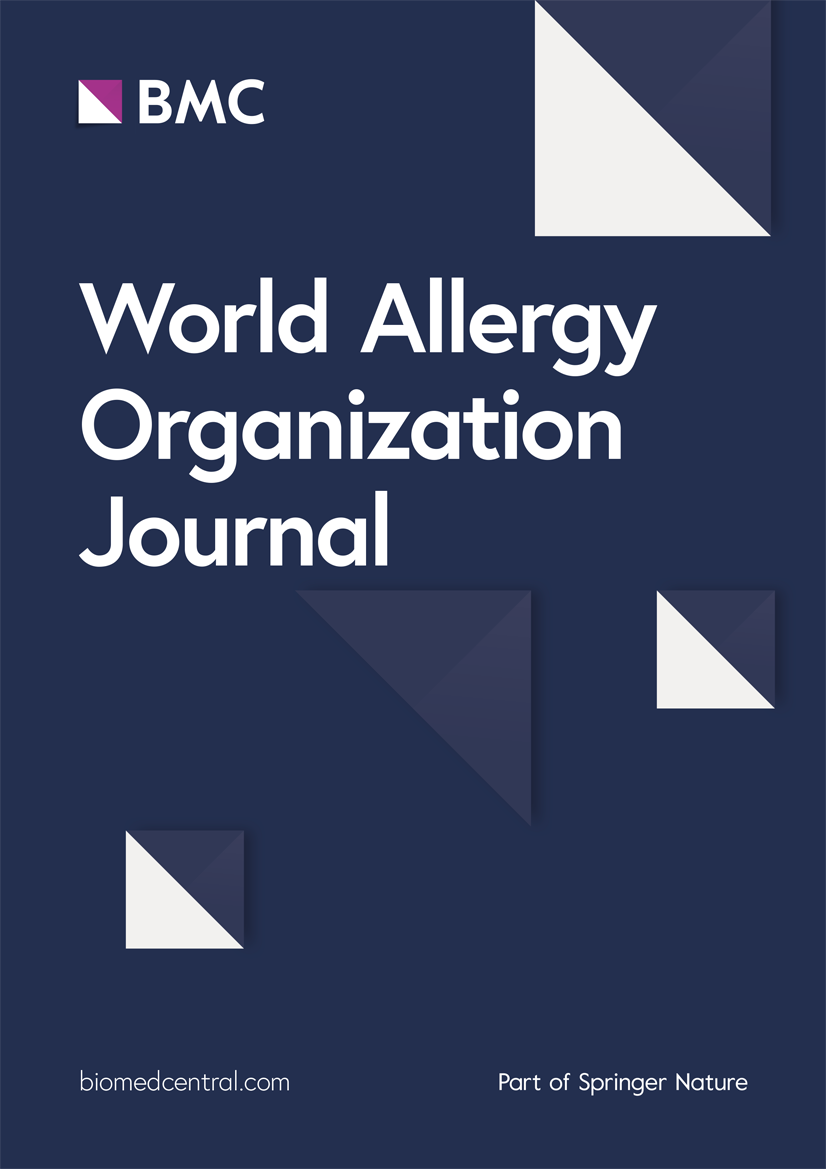Role of body anthropometry in severe asthmatic patients: Evidences from the Severe Asthma Network in Italy (SANI) registry
IF 4.3
2区 医学
Q2 ALLERGY
引用次数: 0
Abstract
Asthma and obesity are both chronic diseases. Obesity is a common comorbidity and a risk factor of severe asthma, associated with increased asthma exacerbation risk, poorer asthma control and reduced quality of life. However, the responsible mechanisms are poorly understood. The aim of this study was to detect parameters associated with obesity in patients with severe asthma in order to check different pattern of inflammation in obese asthmatics. Baseline data from the Severe Asthma Network in Italy (SANI) registry were analysed in 1922 patients with severe asthma. Demographic, clinical and functional features were compared, according to body mass index (BMI). The prevalence of overweight and obesity among severe asthma patients was 34,8 and 20,3, respectively. Females were more prevalent in the obese cluster (p < 0.001). Asthma onset age in overweight and obese patients was higher than in normal population (p < 0.001). Obese subjects reported less frequently chronic rhinosinusitis with nasal polyposis (CRSwNP) and more frequently impaired sleep quality, cardiovascular disease, and type-2 diabetes (p < 0.001). Severe asthma patients with obesity had lower predicted FVC values (89.0 ± 19.2 vs 93.5 ± 20.2; p 0.002) and higher FEV1/FVC ratio (69.9 ± 11.5 vs 66.9 ± 12.4; p < 0.001) than patients without obesity. Obese asthmatics had lower blood eosinophilic count, and fractional exhaled nitric oxide (FeNO) levels than non-obese asthmatics. Asthma control test (ACT) was significantly poorer in obese patients (17, IQR 12–21) than other subgroups. Regarding treatment, overweight and obese patients were more likely to receive a GINA-Step 5 therapy (p 0.023), with more than 20 of obese asthmatics having frequent exacerbations requiring oral corticosteroid (OCS). Patients with severe asthma and obesity presented different characteristics that support the existence of distinct asthma phenotype in obese patients.
Trial registration
Trial registry: ClinicalTrials.gov. ID: NCT06625216. Retrospectively registered October 3, 2024.
人体测量在严重哮喘患者中的作用:来自意大利严重哮喘网络(SANI)登记的证据
哮喘和肥胖都是慢性疾病。肥胖是严重哮喘的常见合并症和危险因素,与哮喘恶化风险增加、哮喘控制较差和生活质量下降有关。然而,人们对其机制知之甚少。本研究的目的是检测严重哮喘患者与肥胖相关的参数,以检查肥胖哮喘患者不同的炎症模式。来自意大利严重哮喘网络(SANI)登记的基线数据分析了1922例严重哮喘患者。根据体重指数(BMI)比较人口学、临床和功能特征。重度哮喘患者中超重和肥胖的患病率分别为34.8和20.3。女性在肥胖人群中更为普遍(p <;0.001)。超重和肥胖患者哮喘发病年龄高于正常人群(p <;0.001)。肥胖受试者报告慢性鼻窦炎合并鼻息肉(CRSwNP)的频率较低,而睡眠质量受损、心血管疾病和2型糖尿病的频率较高(p <;0.001)。重度哮喘合并肥胖患者FVC预测值较低(89.0±19.2 vs 93.5±20.2;p 0.002)和更高的FEV1/FVC比值(69.9±11.5 vs 66.9±12.4;p & lt;0.001)。肥胖哮喘患者的血液嗜酸性粒细胞计数和呼出一氧化氮(FeNO)分数水平低于非肥胖哮喘患者。肥胖患者哮喘控制测试(ACT)明显低于其他亚组(17,IQR 12-21)。在治疗方面,超重和肥胖患者更有可能接受GINA-Step 5治疗(p 0.023),超过20例肥胖哮喘患者频繁发作,需要口服皮质类固醇(OCS)。重度哮喘和肥胖患者表现出不同的特征,支持肥胖患者存在不同的哮喘表型。试验注册:ClinicalTrials.gov。ID: NCT06625216。追溯登记于2024年10月3日。
本文章由计算机程序翻译,如有差异,请以英文原文为准。
求助全文
约1分钟内获得全文
求助全文
来源期刊

World Allergy Organization Journal
Immunology and Microbiology-Immunology
CiteScore
9.10
自引率
5.90%
发文量
91
审稿时长
9 weeks
期刊介绍:
The official pubication of the World Allergy Organization, the World Allergy Organization Journal (WAOjournal) publishes original mechanistic, translational, and clinical research on the topics of allergy, asthma, anaphylaxis, and clincial immunology, as well as reviews, guidelines, and position papers that contribute to the improvement of patient care. WAOjournal publishes research on the growth of allergy prevalence within the scope of single countries, country comparisons, and practical global issues and regulations, or threats to the allergy specialty. The Journal invites the submissions of all authors interested in publishing on current global problems in allergy, asthma, anaphylaxis, and immunology. Of particular interest are the immunological consequences of climate change and the subsequent systematic transformations in food habits and their consequences for the allergy/immunology discipline.
 求助内容:
求助内容: 应助结果提醒方式:
应助结果提醒方式:


